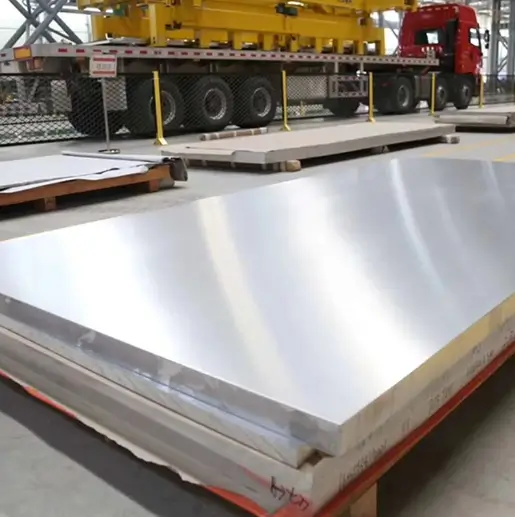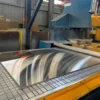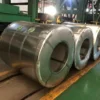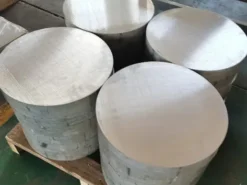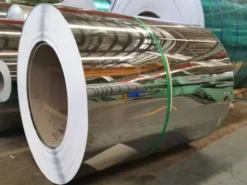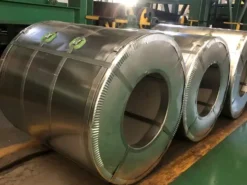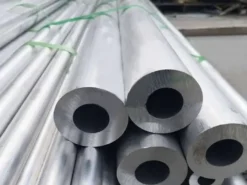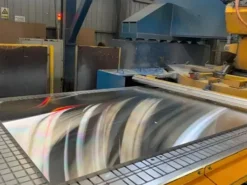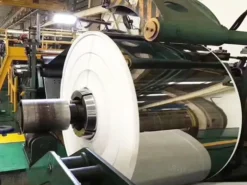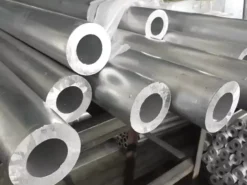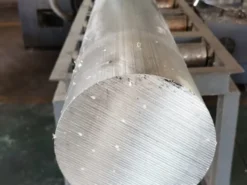5052 aluminum plate is an AL-Mg series alloy aluminum plate, and magnesium is the main alloying element in 5052 alloy aluminum plate. It is the most widely used type of rust resistant aluminum. This alloy has high strength, especially fatigue resistance, high plasticity and corrosion resistance, and cannot be strengthened by heat treatment. It has good plasticity during semi cold work hardening, low plasticity during cold work hardening, good corrosion resistance, good weldability, poor machinability, and can be polished.
Aluminum magnesium alloy also contains small amounts of manganese, chromium, beryllium, titanium, etc. Except for a small amount of solid solution, most of the manganese in the alloy forms MnAl6. The effect of chromium in 5052 aluminum plate is similar to that of manganese, improving its resistance to stress corrosion cracking, enhancing the strength of the base metal and weld seam, and reducing the tendency for welding cracks, but its content generally does not exceed 0.35%.
The main alloy element of 5052 is magnesium, which has good formability, corrosion resistance, weldability, and medium strength. It is used in the manufacturing of aircraft fuel tanks, oil pipes, as well as sheet metal parts for transportation vehicles and ships, instruments, street lamp brackets and rivets, hardware products, and electrical enclosures. AL-Mn series alloy is the most widely used type of rust resistant aluminum. This alloy has high strength, especially fatigue resistance, high plasticity and corrosion resistance, and cannot be strengthened by heat treatment. It has good plasticity during semi cold work hardening, low plasticity during cold work hardening, good corrosion resistance, good weldability, poor machinability, and can be polished. Mainly used for low load parts that require high plasticity and good weldability, working in liquid or gas media, such as fuel tanks, gasoline or lubricating oil ducts, various liquid containers, and other low load parts made by deep drawing: wire is used for rivets.
Chemical composition:
Aluminum Al: Margin
Silicon Si: ≤ 0.25
Copper Cu: ≤ 0.10
Magnesium Mg: 2.2~2.8
Zinc Zn: ≤ 0.10
Manganese Mn: ≤ 0.10
Chromium Cr: 0.15~0.35
Iron Fe: ≤ 0.40
Note: Single: ≤ 0.05; Total: ≤ 0.15
Mechanical properties:
Tensile strength( σ B): 170~305MPa
Conditional yield strength σ 0.2 (MPa) ≥ 90
Elastic modulus (E): 69.3~70.7Gpa
Annealing temperature: 345 ℃
Process performance:
⑴ Forming performance
① The alloy has good plasticity during hot processing. The forging and die forging temperatures are 420~475 ° C, and thermal deformation with a deformation rate of 80% is carried out within this temperature range.
② Its cold stamping performance is related to the alloy state, with good cold stamping performance in the annealed (O) state, followed by H32 and H34 states, and poor in H36/H38 states.
⑵ Welding performance
① The alloy has good performance in gas welding, Arc welding, Electric resistance welding, spot welding and seam welding. Crystalline cracks tend to appear during argon arc welding. The brazing performance is good, but the Soldering performance is poor.
② The strength and plasticity of the weld seam are high, with the weld seam strength reaching 90% to 95% of the base metal strength. However, the airtightness of the weld seam is not high. It is recommended to use 5A03 alloy as the solder to improve its airtightness and eliminate the tendency for cracks.
⑶ Mechanical processing performance
The cutting performance of this alloy in the annealed state is poor, while it improves in the cold work hardening state.

